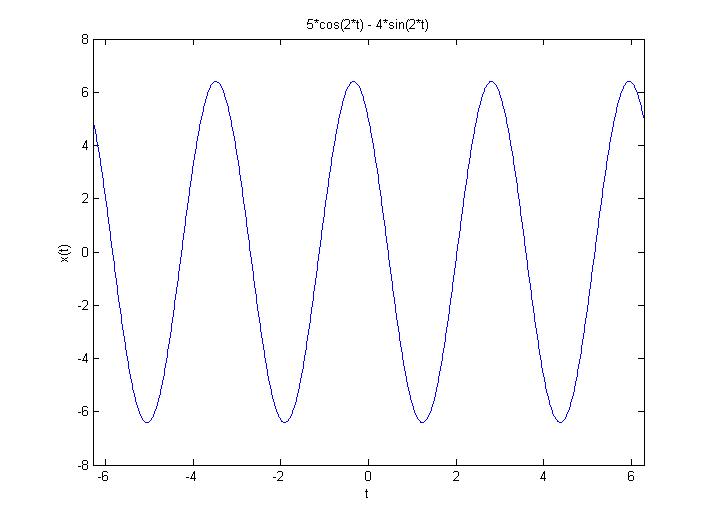| Line 6: | Line 6: | ||
| − | <math> \,\ sin(x) = </math> | + | <math> \,\ sin(x) = \frac{1}{2j} * (e</math><sup>(jx)</sup> <math> \,\ - e</math><sup>(-jx)</sup><math> \,\ )</math> |
| + | |||
| + | and | ||
| + | |||
| + | <math> \,\ cos(x) = \frac{1}{2} * (e</math><sup>(jx)</sup> <math> \,\ + e</math><sup>(-jx)</sup><math> \,\ )</math> | ||
Revision as of 11:16, 24 September 2008
Periodic CT Signal and Its Fourier Coefficients
Take the signal $ x(t) = 5cos(2t) - 4sin(2t) $. The graph below proves that it is indeed periodic, with a period $ T = \pi $.
$ \,\ sin(x) = \frac{1}{2j} * (e $(jx) $ \,\ - e $(-jx)$ \,\ ) $
and
$ \,\ cos(x) = \frac{1}{2} * (e $(jx) $ \,\ + e $(-jx)$ \,\ ) $


